 My grandma was a letter writer. I have sheaves of her letters, all typed and on thin, pale green paper. They detail the buses she took, and in what weather, to the bank, to Mass, to help with the church rummage sale; the breakfasts and lunches and dinners she ate—toast with butter or peanut butter, an egg over easy, a half sandwich, coffee with sugar. I can see her at her desk in my grandparents’ little den, typing quickly and with erect posture, slipping in a piece of correction paper for a letter mistyped, sipping weak coffee from a Corian cup. It seemed natural to me, then, to begin writing letters when I was 18 and starting college. I wrote to my extended family here and there, and then, with some gusto, to my husband’s after we met and married, to friends, and then to my daughter when she went away some eleven hundred miles to college. In the years we lived in England and Japan there were sometimes pages and pages, unopened and sitting on the coffee table when I visited my parents-in-law months later. I didn’t mind. I was happy to record those details, to remember, and to send them off. And sometimes, over years collected in order and tucked away, the letters have become such a lovely record. I have a friendship in letters with my dear friend Susie, another letter writer. We lived in the same building in England for four short months, but we’ve written to each other for twenty-five years. In our house, now, I have a file of my grandma’s letters, and one for Susie’s, lined up like paper soldiers, and a box of all the correspondence between me and my husband—from the first birthday cards we exchanged 27 years ago to long letters written while we were apart: funny, romantic, newsy, the details long forgotten until I open one and am surprised by them and by our youth. And last year my Honey Girl published a book of the letters I wrote to her during her first year of college, more than 200 pages of long-distance love, equally surprising in its bound state. I started this blog as a kind of letter, too.
My grandma was a letter writer. I have sheaves of her letters, all typed and on thin, pale green paper. They detail the buses she took, and in what weather, to the bank, to Mass, to help with the church rummage sale; the breakfasts and lunches and dinners she ate—toast with butter or peanut butter, an egg over easy, a half sandwich, coffee with sugar. I can see her at her desk in my grandparents’ little den, typing quickly and with erect posture, slipping in a piece of correction paper for a letter mistyped, sipping weak coffee from a Corian cup. It seemed natural to me, then, to begin writing letters when I was 18 and starting college. I wrote to my extended family here and there, and then, with some gusto, to my husband’s after we met and married, to friends, and then to my daughter when she went away some eleven hundred miles to college. In the years we lived in England and Japan there were sometimes pages and pages, unopened and sitting on the coffee table when I visited my parents-in-law months later. I didn’t mind. I was happy to record those details, to remember, and to send them off. And sometimes, over years collected in order and tucked away, the letters have become such a lovely record. I have a friendship in letters with my dear friend Susie, another letter writer. We lived in the same building in England for four short months, but we’ve written to each other for twenty-five years. In our house, now, I have a file of my grandma’s letters, and one for Susie’s, lined up like paper soldiers, and a box of all the correspondence between me and my husband—from the first birthday cards we exchanged 27 years ago to long letters written while we were apart: funny, romantic, newsy, the details long forgotten until I open one and am surprised by them and by our youth. And last year my Honey Girl published a book of the letters I wrote to her during her first year of college, more than 200 pages of long-distance love, equally surprising in its bound state. I started this blog as a kind of letter, too.
It occurs to me that letter writing is an old fashioned thing now. I suppose my style of cooking is, too. These lamb shanks are in our regular rotation and one of my favorite things to cook and eat, but it seems they have gone out of fashion, despite the seeming trend in countrified food styling and farmer-centric cooking. When I made these most recently, I had to go to three butchers to gather five shanks. “No one buys them anymore,” all three butchers told me with varying degrees of sadness. If you have never braised lamb shanks, bookmark this and drive wherever you need to to procure some. They are some of the best eating, relatively simple to cook, impossible to spoil, cook largely unattended until you are ready for them, and reheat beautifully.
Because I’m loath to interrupt my life for the blog, I don’t often post savory recipes. Once dinner is ready, I don’t want to wait to share it. I can’t imagine puttering around while the food gets cold. Cooking, for me, is an act of service. It’s pleasurable, sure, but in the end it’s about the people I love. And food photography is a tinkery little beast—a quarter inch here, a quarter inch there—and I don’t have a permanent set-up. I lug a little table in from the backyard, wipe off the snow or rain or dust, and pull out my tripod and camera and mat boards from the office whenever I want to photograph something. I can make breakfast while my family are sleeping or fry up a handful of pancakes after we’re done eating together. And I can bake up a dessert while everyone is away at work and at school or in the evening while homework is tended to. A stack of crispy French toast or a coffee cake already photographed and ready as you walk in the door after school? Well, that’s usually greeted with a certain amount of glee. And I never have to delay shared pleasure for the tedium of photography. So I feel I should offer a little apology to this lamb, which is so poorly represented by these photographs, and to you. These shanks are beautiful when they emerge from the oven. But I ate most of my shank and what remained sat, lonesome in the pot, until I photographed it today. All of the gorgeous brown bits of meat have been picked off and eaten greedily. It looks rather sad today. So imagine a lovely, browned shank with lots of tender meat. In short, don’t let these photographs put you off the dish. Like old letters, it’s a keeper.
Braised Lamb Shanks
Yield: 5 generous servings if you serve the shanks whole, or about 8 servings if you separate meat from bone and serve the dish as a soup; both are equally nice, though the soup makes for a more casual meal
Ingredients:
5 lamb shanks*
3 medium fennel bulbs, diced
4 medium carrots, peeled and diced
2 medium leeks, white and pale green parts diced and rinsed thoroughly
5 large cloves of garlic, minced
2 medium fresh tomatoes (in late summer) or 14 ounces drained whole plum tomatoes, seeded, and diced
28 ounces great northern beans, drained and rinsed or 2 c. dried beans soaked overnight in cold water and drained
6 c. chicken stock (homemade or Swanson’s organic)
salt and pepper
*If you can find pasture-raised lamb, it’s worth the price.
Method:
- Preheat your oven to 300 degrees F.
- Dry the lamb shanks well and season them fairly generously with salt and pepper on all sides.
- Heat a large enameled cast iron pot or Dutch oven over medium-high heat.
- When it is hot, drizzle in a bit of olive oil.
- Place the lamb shanks into the pan and allow them to sear and brown. If they do not fit without crowding, you will need to sear them in batches. Do not crowd the pan. Do not disturb them or be tempted to peek at them as they brown. They will pull away easily when they are ready.
- Rotate the shanks, allowing them to brown well before turning again, until all sides are nicely seared and deep brown. This will take about 30 minutes. Time invested in browning enriches the broth and adds tremendous flavor.
- Remove the shanks from the pan and place them on a large dinner plate. Allow them to rest at room temperature.
- Pour off almost all of the rendered fat from the pan.
- Add the fennel, carrot, and leek and season them with a bit of salt and pepper. Saute the vegetables, stirring them occasionally, until the fennel has given off some liquid and the liquid has evaporated, and until the vegetables are beginning to soften and take on a bit of color. As they sauté use a wooden spoon to scrape the browned bits from the bottom and sides of the pan.
- Add the garlic and stir for one minute.
- Add the tomatoes and beans and stir them into the pot.
- Nestle the lamb shanks into the vegetables. This works best if they are placed in a tight row with the narrowest side up.
- Cover the shanks with stock. It’s okay if a couple of inches of meat remain above the line of the stock. Season the stock with a bit of salt and pepper and cover the pot.
- Allow the stock to come to a simmer.
- Transfer the covered pot to your oven. Braise the lamb shanks in the oven until the meat is extremely tender and pulls easily or falls from the bone, about two hours.
- Taste the stock and adjust the seasoning, if necessary.
- At this point you may either serve the lamb shanks whole or as a soup.
- To serve the shanks whole, place a shank on a soup plate for each diner and ladle over some of the stock, beans, and vegetables. To serve as a soup, allow the dish to cool a bit until you are able to handle the meat without getting burned. Transfer each lamb shank to a large cutting board; one with a well at its edges is most convenient for this task. Pull the meat from the bone, pull away any sinew and fat, and cut or pull the meat into smaller pieces. Transfer the meat back to the pot and stir it into the soup.
- This dish may be prepared a day or two before you wish to serve it. Warm it on the stove over low heat until the stock comes to a simmer before serving.
- If I prepare this for the family, we inevitably have leftover lamb on each of our shanks. I pick the meat from the bones and add it to the soup for the next day.

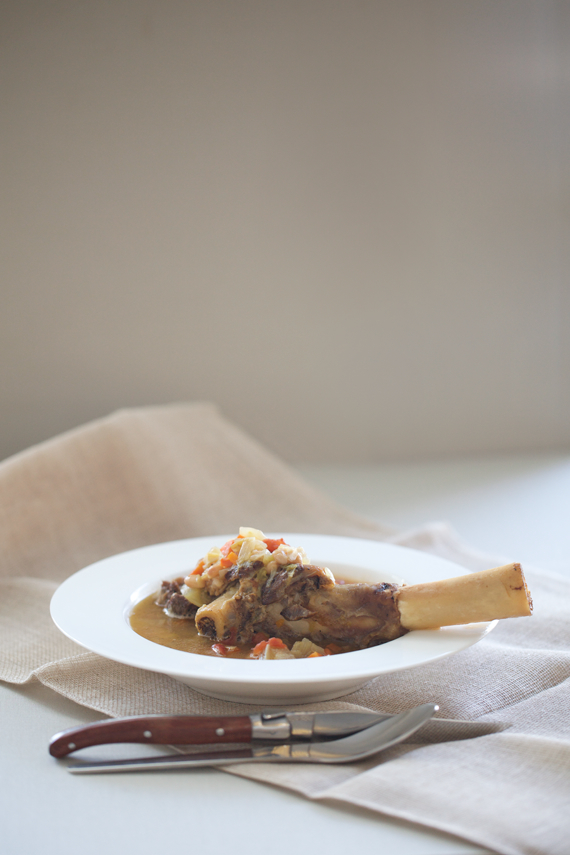
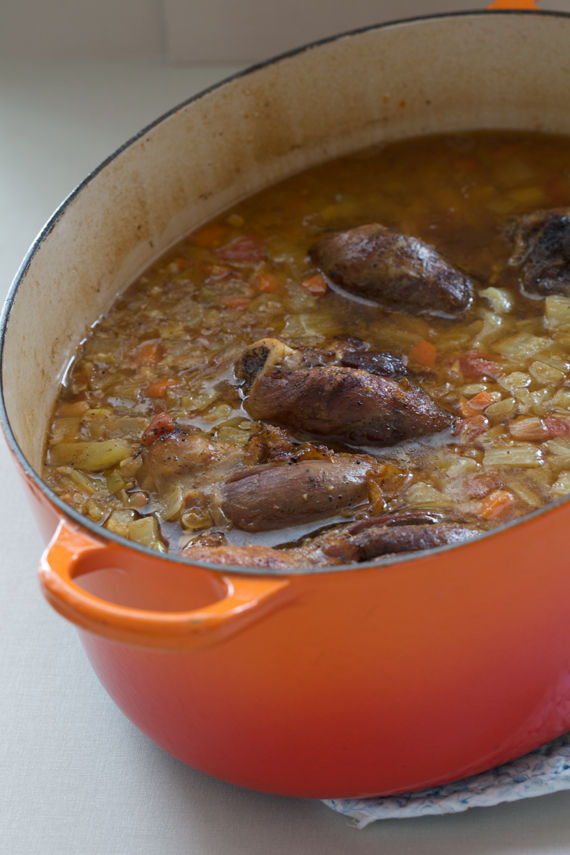







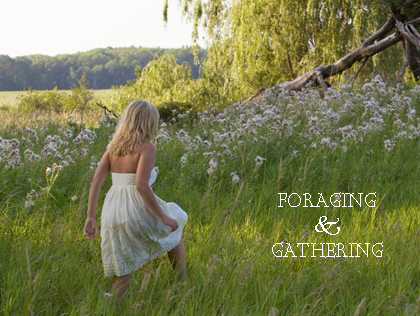
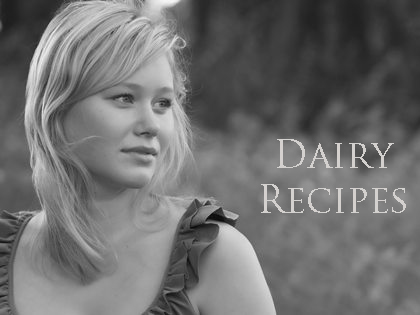

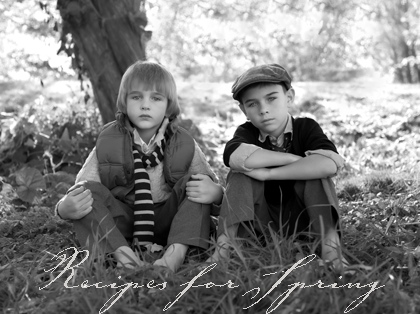
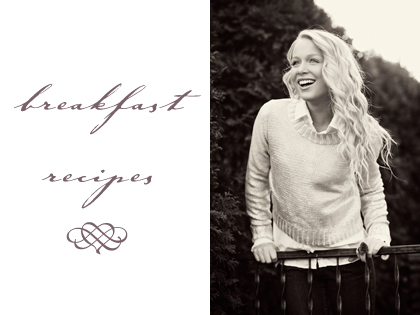









{ 12 comments… read them below or add one }
Looks delicious ! Buy your lamb from Allens of Mayfair, online butcher or if you live in London, go to their shop in Mayfair.
Great recipe!
I prefer to buy lamb raised at a farm nearby when my favorite butcher has it, but thank you for the suggestion for cooks who can’t find it close to home.
Your food photography is beautiful and genuine.
Thank you, Barbie. That is so kind of you.
My late father spoke fondly of his mother’s lamb shanks as one of his all time favorite dishes. Sadly, I don’t ever recall getting to eat her lamb shanks as a girl, and my mother never cooked them. Thanks for you recipe, I hope to try it out and mend the broken link in my family culinary heritage!
Ann, Thank you. Reading that means so much to me. I often think about how much we lose as a culture when memory becomes history and we don’t pass down our knowledge, especially in the realm of cooking and eating together. I’m so looking forward to making cheese together when you visit in April. xo
i bet i would love these shanks.
i can’t believe you found your letters unopened! aaargh.
Kris, I cooked these for book group one month–a long time ago. Time to make them again!
Yes, but it was okay.
Lamb is something I have almost never cooked before. They are expensive here and good ones are hard to come by. But I have been wanting to make lamb for the longest time ever. Yours look great!
Lim Pei Lin, It’s expensive here, too, unfortunately. The shanks used to be a budget-friendly cut years ago, but they are expensive now, too. They’re worth a splurge–or a reallocation of other food dollars for the week.
These look awesome. I live in the Twin Cities. I’m curious to know where you DID end up finding lamb shanks.
Jenny,
I almost always purchase them at the Lakewinds co-op in Minnetonka. Byerly’s also sometimes carries them. And Clancy’s in Linden Hills is a good spot, too.